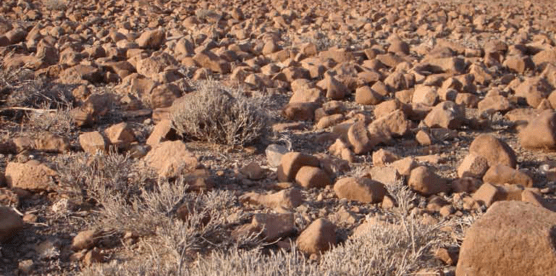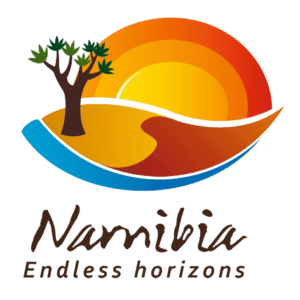Himba Cultural Experience

Total distance: 443km
Suggested time period: 3-5 days
This route links oasis settlements and springs through a unique part of the Himba tribal heartland. Palmwag is a cluster of ancient palm trees under which small herds of elephants congregate in the river vegetation. Local tour operators offer walking tours to find the last free ranging black rhinos found within the conservancies. Attractions in the vicinity include the restored German fort dating back to 1896, the promise of a refreshing swim at the spectacular Ongogo waterfall and the Khowarib Schlucht (gorge) that offers shelter from the surrounding desert.
The stretch of road between Sesfontein and Puros skirts the sparsely vegetated Namib dune fields that support a range of wildlife such as ostriches, springbok and giraffe. The remote Himba settlement at Puros comes as a surprise in the harsh desert environment. Cool campsites under huge camelthorn trees offer shelter from the blazing sun with the odd desert elephant may stroll by. The famous Hoanib elephant herd can be tracked down by experienced local guides.
Another highlight on the route, albeit insignificant at first sight is rooidrom (red drum), a junction known by adventure travellers far and wide. This quirky landmark is a major intersection in the far north of Kaokoland and those with a sense of humour have added distance markers telling you how far you are from Moscow, London and Cape Town. The Marienfluss valley, dotted with mud covered Himba huts, can either be covered in waving yellow grass or be a wind-sept landscape covered by a red sand. The permanently flowing Kuenen River comes as a refreshing surprise with its clear water and river bank studded with makalani palms.
Attractions:
Palmwag
- Palmwag remains one of the best lodges in Damaraland from which to track desert adapted elephant and black rhino, especially in the dry winter months when elephant frequent the Uniab river bed and lodge waterhole.
Fort Sesfontein
- The most well-known landmark in Sesfontein is an old fort built in 1896. Almost a hundred years after it was first built, the historical monument, originally a police outpost, was reconstructed and equipped to accommodate tourists. The palm trees at the fort were planted by the German police officers who manned the fort to combat weapons smuggling and elephant and rhino poaching. Another attraction is the small cemetery. The cemetery only has three graves. One soldier died in a construction accident when the fort was being built, a second belonged to a trader and the third to another soldier who died of illness.
Warmquelle
- Warmquelle is a small settlement situated on the site of a spring. In the early years of this century the spring was used in an irrigation project, for which an aqueduct was constructed. Now only a few parts of the old aqueduct remain, together with a small Damara settlement and quite a large school. Attractions in the settlement itself are limited to the ruins of old German irrigation systems and the hot springs.
Swartbooisdrift
- Swartbooisdrift is a small settlement on the banks of the Kunene River, on the Angolan border. Depending on the season, Swartbooisdrift is populated by 150 - 300 semi-nomadic people of Himba and Herero descent. The settlement is named after Petrus Swartbooi, one of the tribal chief captains of the Swartbooi Nama who raided the area in the 1890's. It has some historic significance as the place where Dorsland Trekkers crossed the Kunene River in 1881 to move into Angola. In commemoration of this migratory movement the Dorsland Trekkers Monument has been erected on a hill just outside the settlement.
Dorsland Trek Memorial
- In Kaokoland, several ruins of temporary settlements are still visible, including a reformed church near Kaoko Otavi. Outside Swartbooisdrift the travellers can visit the Dorsland Trekkers Monument which commemorates the journey.
Ongongo Waterfall
- The rock pool is spectacular and is a good place to spend days hiking, walking, bird watching or just swimming and relaxing. At the head of a narrow valley a waterfall, fed by a natural spring, drops into a small gorge of calcrete cliffs.
Khowarib Schlucht
- The Khowarib Schlucht is an intriguing geological formation that offers stunning scenery, fauna and an untamed track through the valley. Ploughing through the thick sands of the Hoanib River and traversing wild landscapes, the route is magnificent. The trail begins just east of Khowarib and extends all the way towards the small township of Umumbaadjie.
Hoanib Desert Elephants
- Various camps and lodges in the area offer excursions to track the infamous desert-adapted elephants of the Hoanib River. The desert-dwelling elephants are well adapted to this climate and they walk much longer distances than their eastern relatives and can cope with less free water. Their numbers have increased to above 700 in the past years, due to higher conservation efforts.
The Marienfluss
- The next valley inland from Hartmann's is the Marienfluss, which has more soft sand and is greener than Hartmann's Valley. It is covered with light scrub and the odd tree marks an underground river. A most noticeable feature of the Marienfluss is its 'fairy circles', although they are also found, to a lesser extent, in Hartmann's Valley. These are circular patches without any vegetation.
Hartmann’s Valley
- Hartmann's Valley is a 70km valley that is only accessible to seasoned four wheel drivers. In the south, the road starts by crossing a number of steep-sided river valleys. It soon changes to compacted corrugated sand, which shakes your vehicle violently. Finally, this becomes soft before high dunes prevent you reaching the Kunene by vehicle. Despite the harsh conditions, it is very beautiful.
Epupa Waterfall
- The Epupa Falls are created by the Kunene River on the border of Angola and Namibia. The river is 0.5 kilometres wide and drops in a series of waterfalls spread over 1.5km, with the greatest single drop being 37m. The name "Epupa" is a Herero word for "foam", in reference to the foam created by the falling water. The falls are a major drawcard for the route and it has a well-developed local tourism industry with a number of camps, local craft and village tours. A number of camps also offer canoeing and hiking and bird watching is a popular pastime for visitors.
Businesses in the Area
Palmwag Camping2Go
- TNL01065
- +264 813402429
Brado Tented Camp
- TNC-C01198
- +264 81 149 1107
Brado Lodge
- LOD01226
- +264 81 149 1107
B.C. Wilschke
- SEL01805
- +264 81 365 6163



